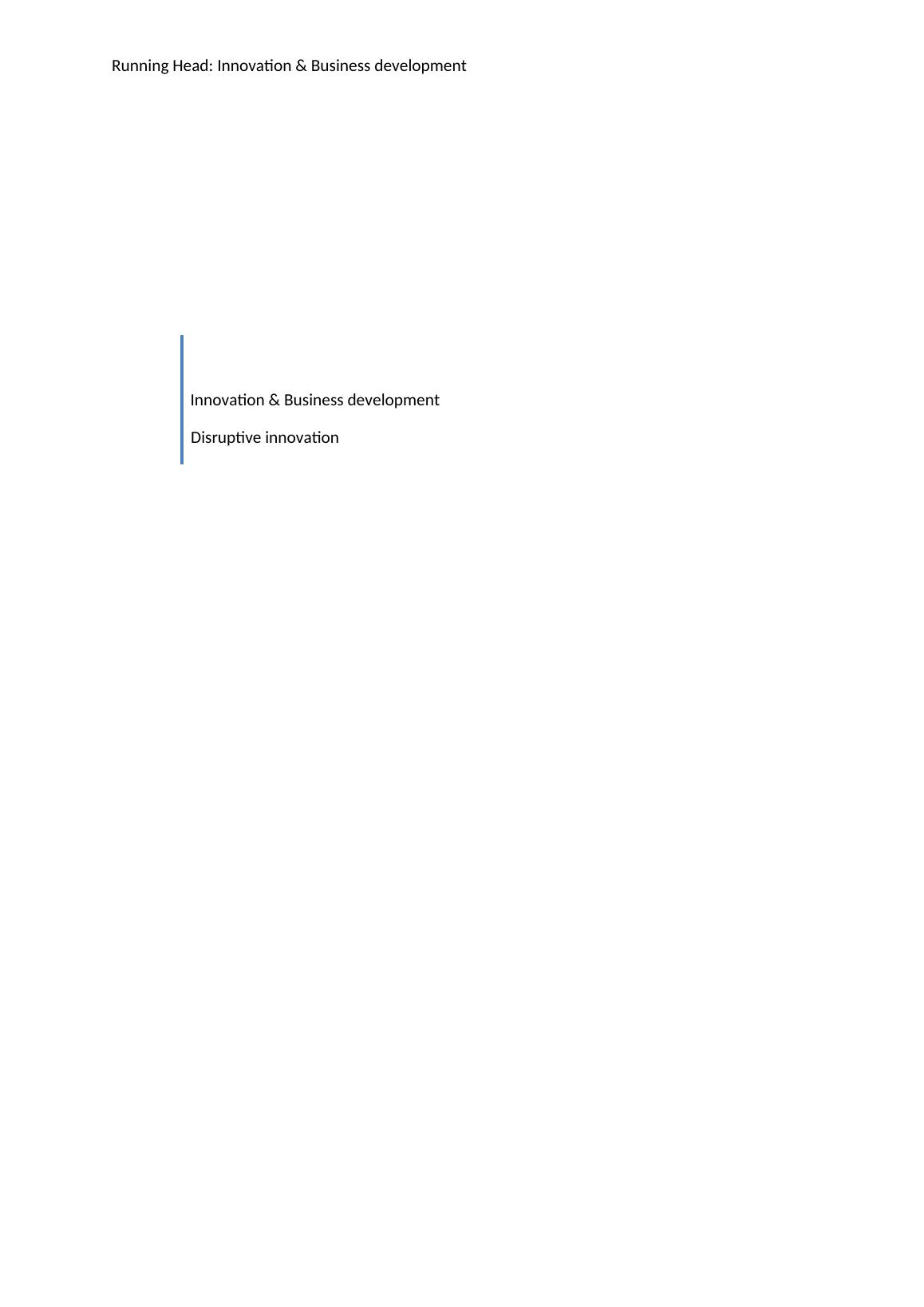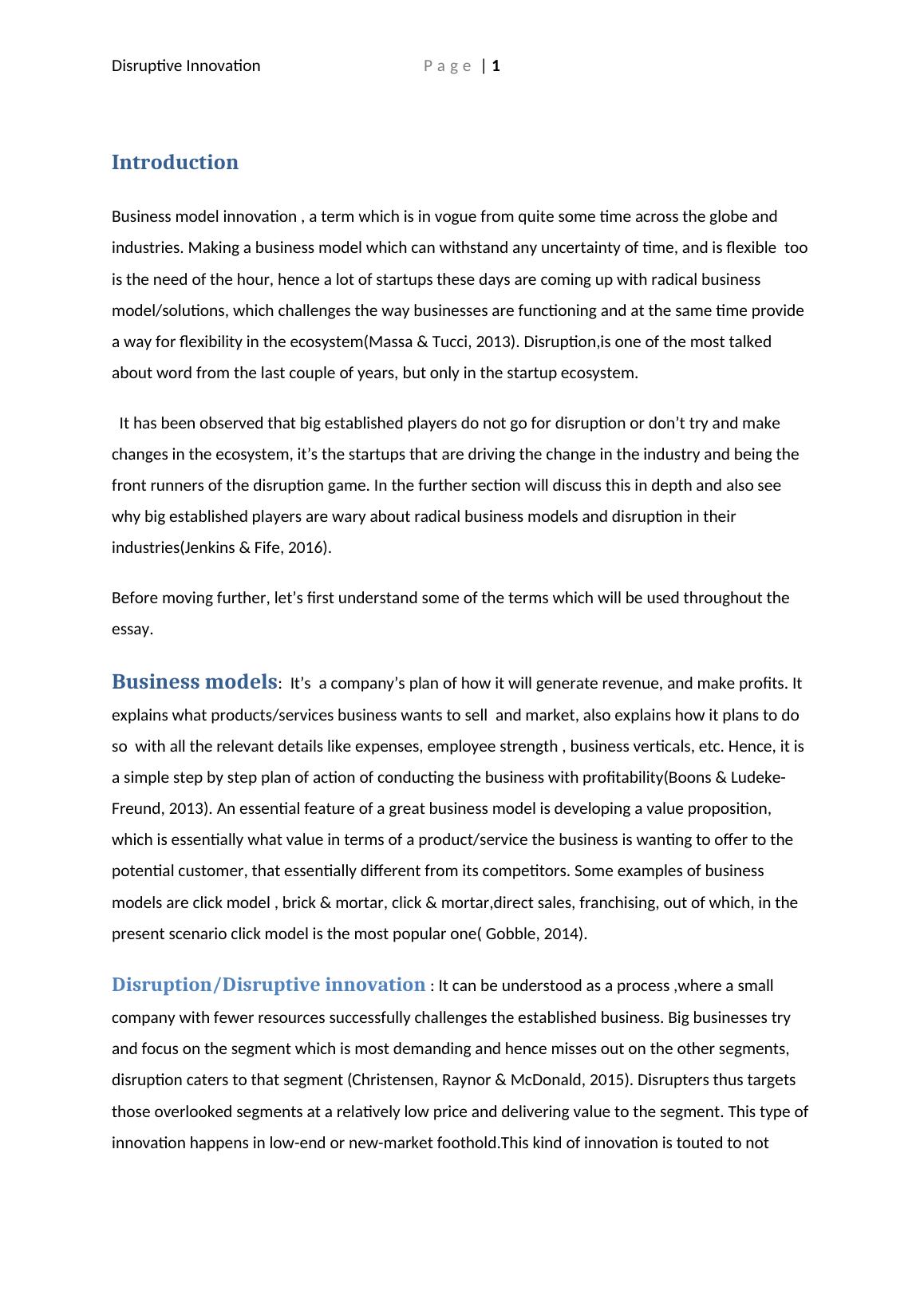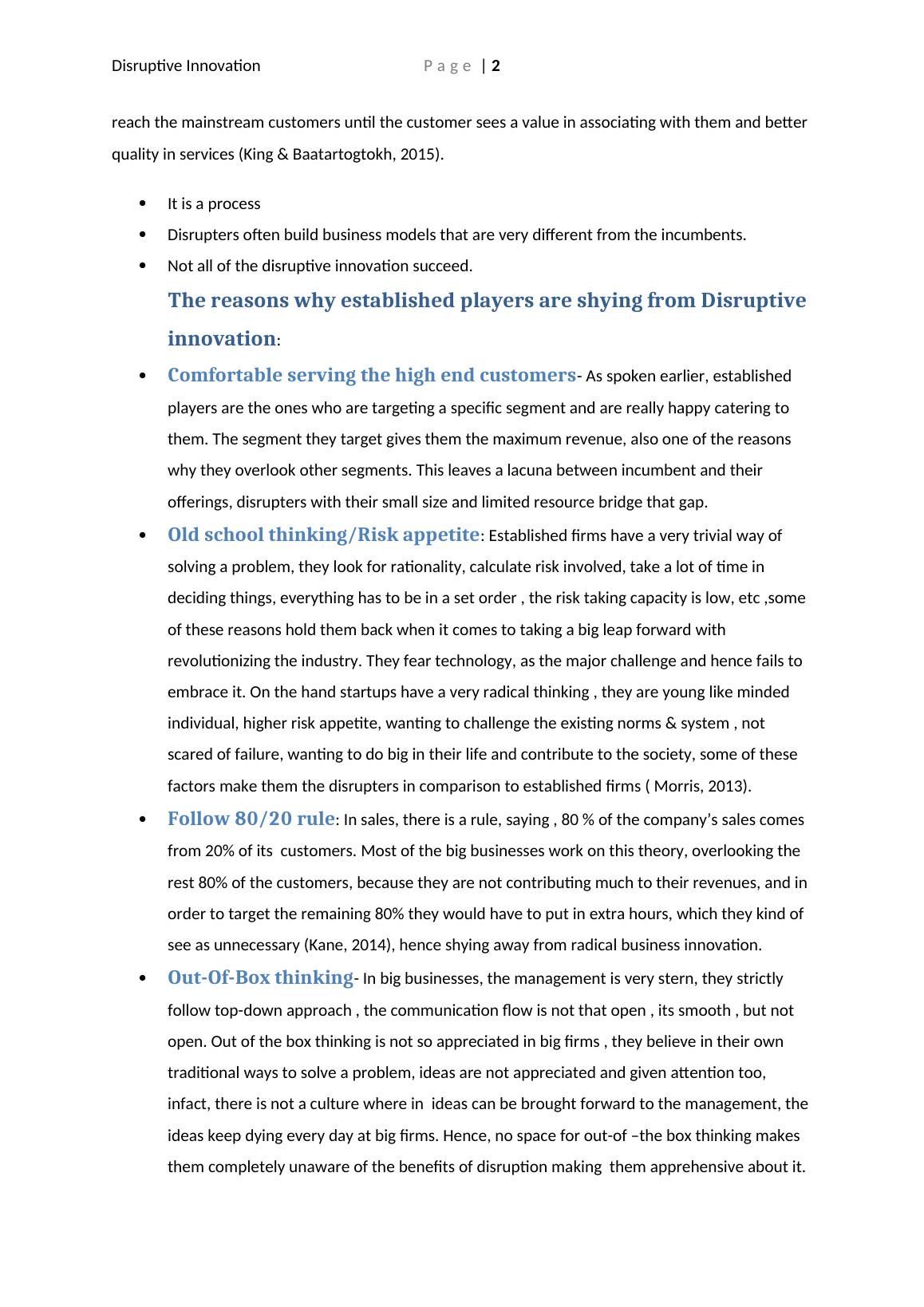Innovation & Business Development | Assignment
Added on 2020-03-28
8 Pages2596 Words99 Views
Running Head: Innovation & Business developmentInnovation & Business developmentDisruptive innovation

Disruptive InnovationP a g e | 1IntroductionBusiness model innovation , a term which is in vogue from quite some time across the globe and industries. Making a business model which can withstand any uncertainty of time, and is flexible toois the need of the hour, hence a lot of startups these days are coming up with radical business model/solutions, which challenges the way businesses are functioning and at the same time provide a way for flexibility in the ecosystem(Massa & Tucci, 2013). Disruption,is one of the most talked about word from the last couple of years, but only in the startup ecosystem. It has been observed that big established players do not go for disruption or don’t try and make changes in the ecosystem, it’s the startups that are driving the change in the industry and being the front runners of the disruption game. In the further section will discuss this in depth and also see why big established players are wary about radical business models and disruption in their industries(Jenkins & Fife, 2016).Before moving further, let’s first understand some of the terms which will be used throughout the essay.Business models: It’s a company’s plan of how it will generate revenue, and make profits. It explains what products/services business wants to sell and market, also explains how it plans to do so with all the relevant details like expenses, employee strength , business verticals, etc. Hence, it is a simple step by step plan of action of conducting the business with profitability(Boons & Ludeke-Freund, 2013). An essential feature of a great business model is developing a value proposition, which is essentially what value in terms of a product/service the business is wanting to offer to the potential customer, that essentially different from its competitors. Some examples of business models are click model , brick & mortar, click & mortar,direct sales, franchising, out of which, in the present scenario click model is the most popular one( Gobble, 2014).Disruption/Disruptive innovation : It can be understood as a process ,where a small company with fewer resources successfully challenges the established business. Big businesses try and focus on the segment which is most demanding and hence misses out on the other segments, disruption caters to that segment (Christensen, Raynor & McDonald, 2015). Disrupters thus targets those overlooked segments at a relatively low price and delivering value to the segment. This type ofinnovation happens in low-end or new-market foothold.This kind of innovation is touted to not

Disruptive InnovationP a g e | 2reach the mainstream customers until the customer sees a value in associating with them and betterquality in services (King & Baatartogtokh, 2015).It is a processDisrupters often build business models that are very different from the incumbents.Not all of the disruptive innovation succeed.The reasons why established players are shying from Disruptiveinnovation:Comfortable serving the high end customers- As spoken earlier, established players are the ones who are targeting a specific segment and are really happy catering to them. The segment they target gives them the maximum revenue, also one of the reasons why they overlook other segments. This leaves a lacuna between incumbent and their offerings, disrupters with their small size and limited resource bridge that gap.Old school thinking/Risk appetite: Established firms have a very trivial way of solving a problem, they look for rationality, calculate risk involved, take a lot of time in deciding things, everything has to be in a set order , the risk taking capacity is low, etc ,some of these reasons hold them back when it comes to taking a big leap forward with revolutionizing the industry. They fear technology, as the major challenge and hence fails to embrace it. On the hand startups have a very radical thinking , they are young like minded individual, higher risk appetite, wanting to challenge the existing norms & system , not scared of failure, wanting to do big in their life and contribute to the society, some of these factors make them the disrupters in comparison to established firms ( Morris, 2013).Follow 80/20 rule: In sales, there is a rule, saying , 80 % of the company’s sales comes from 20% of its customers. Most of the big businesses work on this theory, overlooking the rest 80% of the customers, because they are not contributing much to their revenues, and inorder to target the remaining 80% they would have to put in extra hours, which they kind of see as unnecessary (Kane, 2014), hence shying away from radical business innovation.Out-Of-Box thinking- In big businesses, the management is very stern, they strictly follow top-down approach , the communication flow is not that open , its smooth , but not open. Out of the box thinking is not so appreciated in big firms , they believe in their own traditional ways to solve a problem, ideas are not appreciated and given attention too, infact, there is not a culture where in ideas can be brought forward to the management, theideas keep dying every day at big firms. Hence, no space for out-of –the box thinking makes them completely unaware of the benefits of disruption making them apprehensive about it.

End of preview
Want to access all the pages? Upload your documents or become a member.
Related Documents
Assignment on Corporate Entrepreneurship and Innovationlg...
|14
|2885
|19
Managing Innovation in Business: Netflixlg...
|13
|4161
|207
The Lean Startup Model for Entrepreneurship Developmentlg...
|5
|1404
|333
Product Development & Management PDFlg...
|8
|6158
|23
Changing Business Environment: Essaylg...
|9
|2382
|39
Assignment of Mobile Telecommunication Industrylg...
|8
|1534
|139